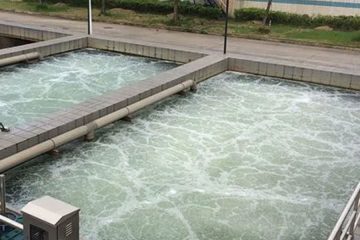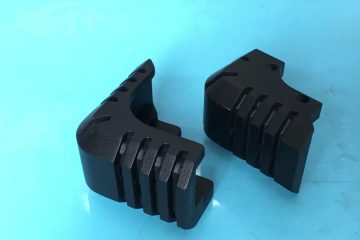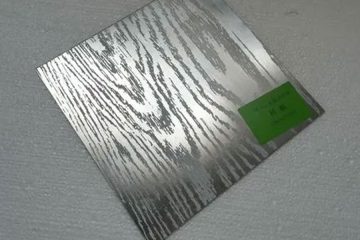Nanopillars fabricated by the metal-assisted chemical etching (MacEtch) wet etching process were compared with nanopillars fabricated by the Bosch dry etching process. The Bosch process in this study provides vertical nanopillars with smooth sidewalls, which is superior to typical Bosch processes. However, the verticality of the nanopillars depends on where they are etched within the wafer. The MacEtch process, on the other hand, uses a 20 nm thick Au film to provide very consistent features from 100 to 1000 nm in diameter without the need for expensive etching tools. This technical report discusses the differences between MacEtch and Bosch processes.
Silicon nanopillars have attracted great interest in the nanofabrication industry due to their large surface area and can be explored in various fields such as sensing, photovoltaics, microelectronics, optoelectronics, and photonics.
Vertical nanopillar arrays have the advantage of a higher surface area to volume ratio, resulting in higher sensitivity and signal-to-noise ratio. The goal of this project is to conduct an on-site inspection of silicon nanopillars fabricated by metal-assisted chemical etching (MacEtch) at the Quattrone Nanofabrication Facility (QNF) and compare them to nanopillars fabricated by deep reactive ion etching (DRIE) using the Bosch process , which is a mature deep silicon dry etching technology.
MacEtch is a wet etching process that provides controllability of structural parameters such as orientation, length, morphology, etc. Furthermore, a simple and low-cost method for fabricating extremely high aspect ratio semiconductor nanostructures is provided. This process uses the catalytic activity of a noble metal (such as Au, Ag or Pt) to etch the silicon beneath it with a mixed solution of an oxidant (such as hydrogen peroxide (H2O2)) and an acid (such as hydrogen fluoride (HF)).
Shows the MacEtch process flow. It can be seen from the figure that the second electron – generates electron holes on the Au layer through the reduction of H and is injected into the Si substrate at the interface between the Si and Au layers. HF will dissolve the oxidized silicon atoms (silicon fluoride) by forming silicon hexafluoride ions. The etch rate underneath the noble metal is much higher than it would be without the catalysis due to the properties of the noble metal, so when the semiconductor is etched directly underneath, the metal layer drops into the semiconductor. This report describes the use of MacEtch to fabricate nanopillars ranging from 100 to 1000 nm.
The Bosch process, on the other hand, involves a series of
(a) Alternating steps of nearly isotropic silicon etching using SF plasma and (b) passivation of already etched silicon to prevent
Use a chemically inert polymer (usually, C4F8). Repeat the cycle to obtain anisotropic vertical photo etching. With the cycle
carried out, it will produce a corrugated type side wall with a scalloped structure. For smaller feature sizes, the scallop size becomes comparable to the feature size, so this can cause problems. This report demonstrates a method to obtain smooth sidewall silicon nanopillars using small amounts
By releasing etching gas (SF6) and passivation gas (C4F8) simultaneously. The reaction is performed at lower temperatures to control etching and obtain anisotropic etch profiles.
Nanopillars fabricated by the MacEtch wet etching process were compared with nanopillars fabricated by the Bosch dry etching process. The Bosch process in this study provides vertical nanopillars with smooth sidewalls, which is superior to typical Bosch processes. However, the verticality of the nanopillars depends on where they are to be etched. The MacEtch process, on the other hand, makes it easier and cheaper to etch silicon materials without the need for expensive etching tools. This study shows that the MacEtch process using a 20 nm thick Au film provides very consistent features, but the top of the pillar is still porous and not smooth. Some parameters need further study, such as Au film thickness and etching solution, to obtain better characteristics.


